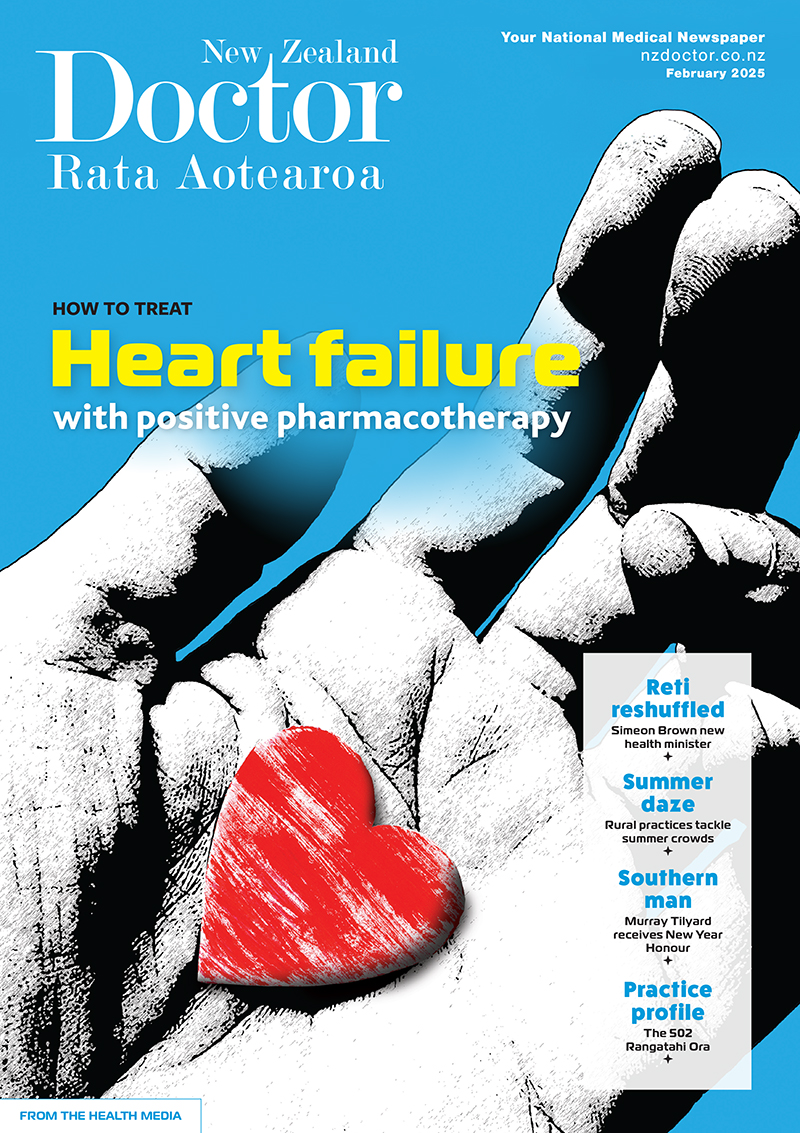Pharmacist prescribers Linda Bryant and Leanne Te Karu discuss positive polypharmacy for heart failure. Current evidence shows the intensive implementation of four medications offers the greatest benefit to most patients with heart failure, with significant reductions in cardiovascular mortality, heart failure hospitalisations and all-cause mortality
When making do no longer works
When making do no longer works

Rebel prescriber Tony Hanne has been working around dysfunctional regulation, just as general practices have been changing hands as a response to vulnerability. Editor Barbara Fountain ponders the impact of ‘fixes’
The large networks have come into existence because the traditional model of ownership was faltering
On the surface, there is little to connect changing general practice ownership with the story of an Auckland GP facing discipline for breaking the rules around prescribing of restricted medicines. But there is a common theme of frustration, make-do and filling a vacuum of need.
As we report in this issue, Tony Hanne has been found guilty of professional misconduct on charges relating to breaches of regulations for prescribing of restricted medications to patients with ADHD. Earlier this month, Dr Hanne pleaded his case to a Health Practitioners Disciplinary Tribunal, detailing how he initially bent the rules through an arrangement with a retired psychiatrist and later, when that was no longer possible, just broke them.
His approaches to the Ministry of Health and Pharmac to find a solution were fruitless. His approach to the Medical Council resulted in the disciplinary charges.
Dr Hanne’s dilemma touched hundreds of patients; the wider dilemma of practice ownership touches the foundations of the health system.
Through lack of attention to primary care funding and workforce training, health officials and politicians have left a key infrastructure element of our health system – the general practice – pretty much untouched. There has long been a distaste among bureaucrats for dealing with matters in the “private” sector and that has left the entire system vulnerable.
Left to its own devices, the sector has seen publicly listed companies, offshore equity firms, health professional partnerships, community-owned trusts, and others, take up general practice ownership. Just over a third of practices are now owned, in part or fully, by a network or trust.
It’s a relief for many GPs approaching retirement that enthusiastic buyers exist for their practices, but the end game remains unclear. The large networks have come into existence because the traditional model of ownership was faltering. They came into existence to meet the need created by the vacuum of policy on sustainable general practice. That’s not a criticism; something had to happen.
But, ultimately, in that vacuum, even the large networks will struggle if the underlying problems are not addressed.
In some areas, primary care practitioners are investing in themselves, recognising that if they want a future primary care service in their area, then they need to be part of the solution. They are scaling up and creating larger group practices with economies of scale and collegiality.
But they are, likewise, vulnerable to the prevailing winds of poor workforce planning and unclear funding policy. Unless general practice becomes and remains attractive to younger GPs and nurse practitioners, then these practices will likely also migrate to the larger networks.
Is that a good thing or a bad thing? It is neither at the moment, it is a mere convenience.
Just as it has been convenient for many in the system to turn a blind eye to Dr Hanne’s practice, inwardly grateful he is meeting unmet need, so health officials have been happy to see general practices bought up by networks because, well, that’s the private sector doing its thing.
But what if the creation of large networks hasn’t removed the problem, but just concentrated it?
Relying on fixes that are born of desperation is harmful to both patients and practitioners.
We're publishing this article as a FREE READ so it is FREE to read and EASY to share more widely. Please support us and the hard work of our journalists by clicking here and subscribing to our publication and website






